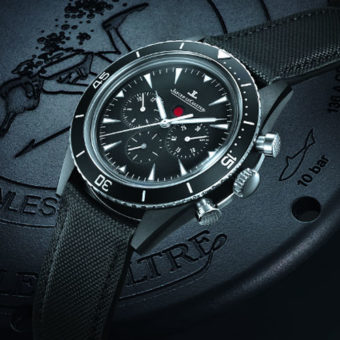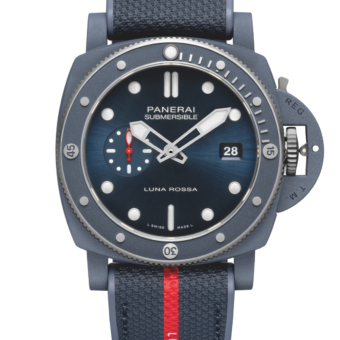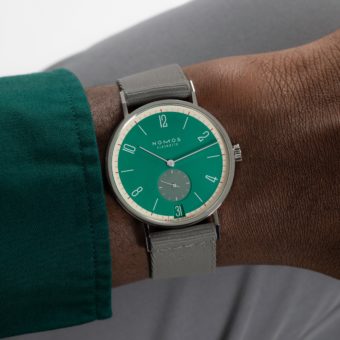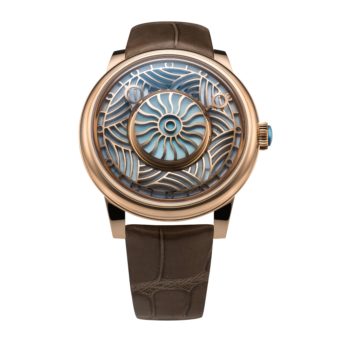Every good watch brand needs some sort of visual shorthand to make it recognizable, and Jaquet Droz has managed to claim as its own a very old, very traditional style of timekeeping display: the figure-eight dial arrangement of one smaller subdial, usually for the hours and minutes, at the top, overlapping a larger subdial, usually for the independent, not-so-small seconds indication below. Lately, Jaquet Droz has even integrated other complications into this classical design — which was a hallmark of early pocketwatches produced by the brand’s founder and namesake, Pierre Jaquet-Droz — such as the GMT display in the Grande Seconde Dual Time watch I recently reviewed. The brand has also been having fun with variations on the look, sometimes striving for symmetry, other going for a more unbalanced look. The latter style is in evidence with the new Jaquet Droz Black Ceramic Power Reserve Clous de Paris, introduced at this year’s Baselworld and one of two new models with black ceramic cases and clous de Paris dial decoration.
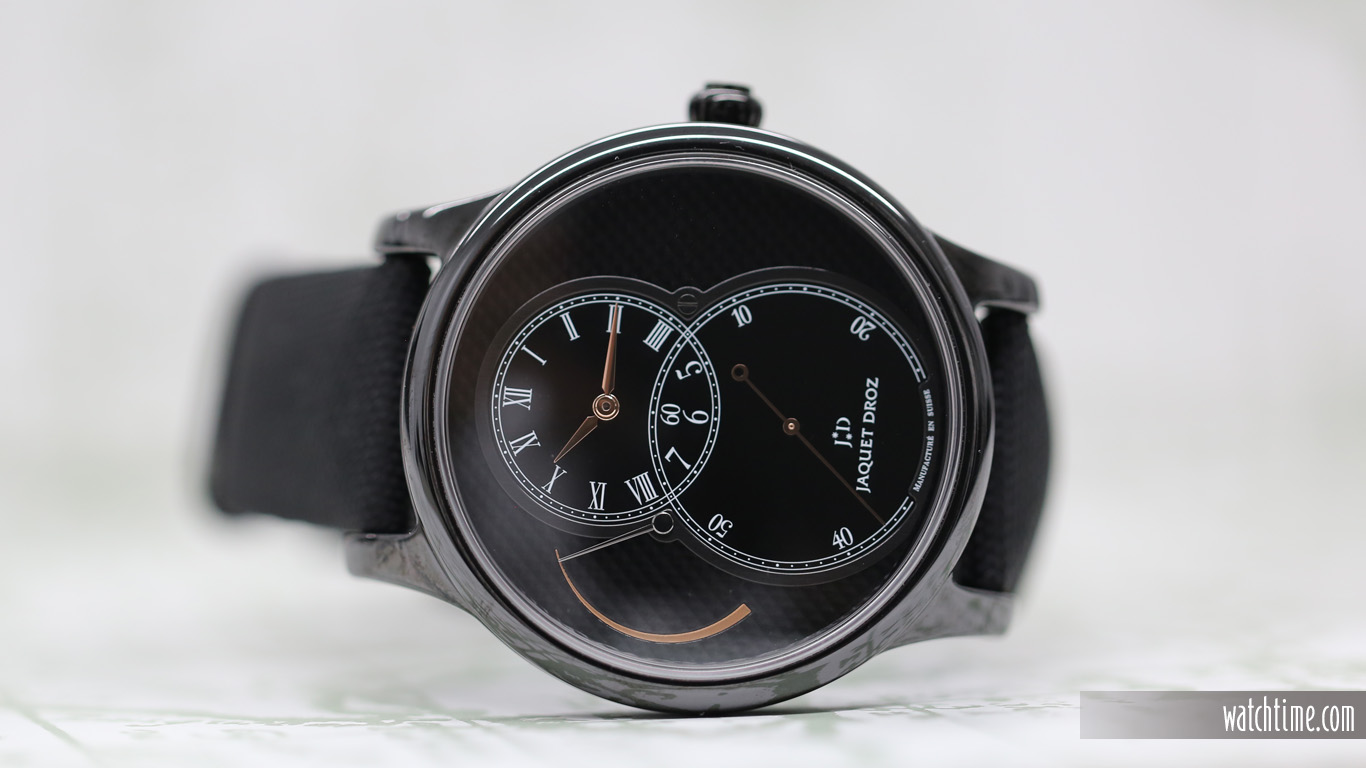
As with most Jaquet Droz models, the case manages to be both demonstrably large (44 mm in diameter) and yet suitably elegant, with a very narrow, nigh-nonexistent bezel and a big, broad sapphire crystal with a subtle convex curve. The play of light and shadow over the case’s curves, including its ergonomically sloping lugs, is very appealing. The grooved winding crown is also draped in black, with the two tiny Jaquet Droz stars, only slightly perceptible to the naked eye, lightly engraved into the crown’s surface. The turning of the crown to wind the mainspring is smooth and very nearly silent.
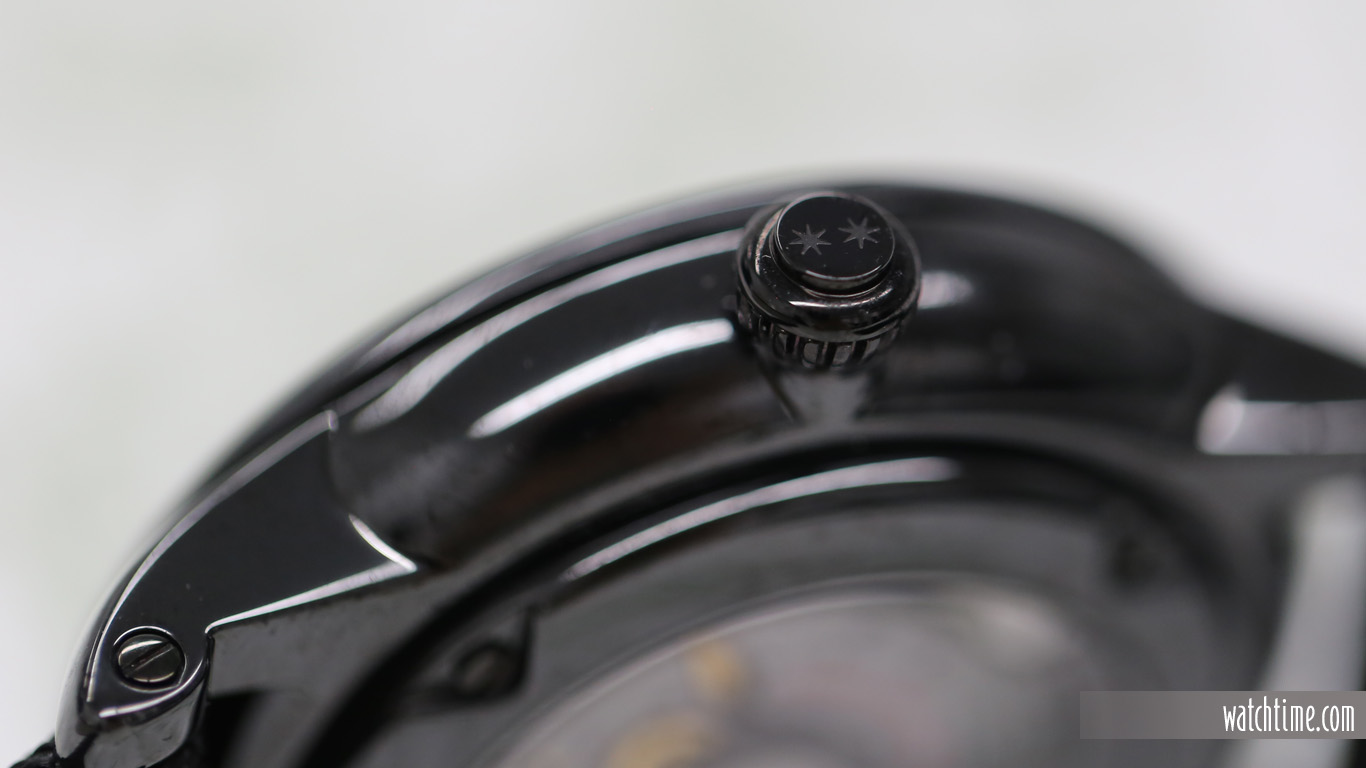
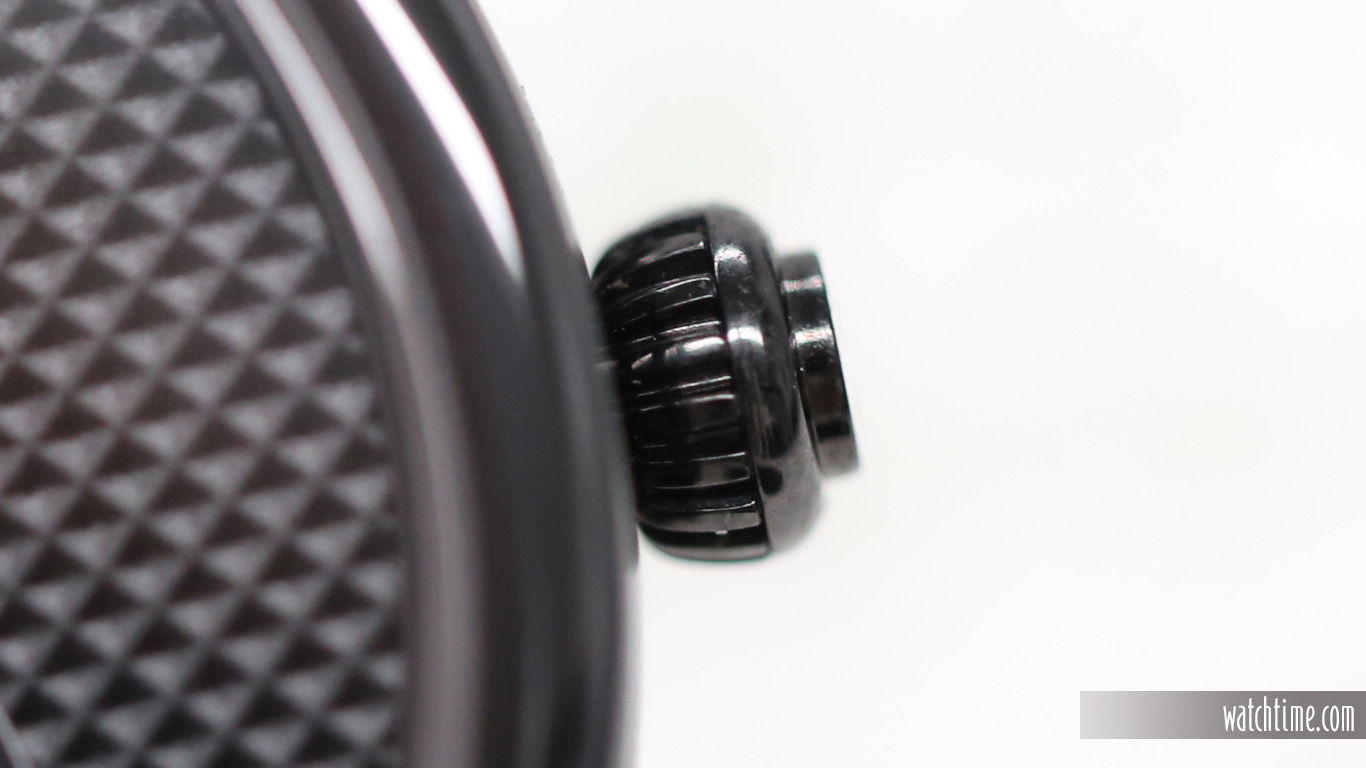
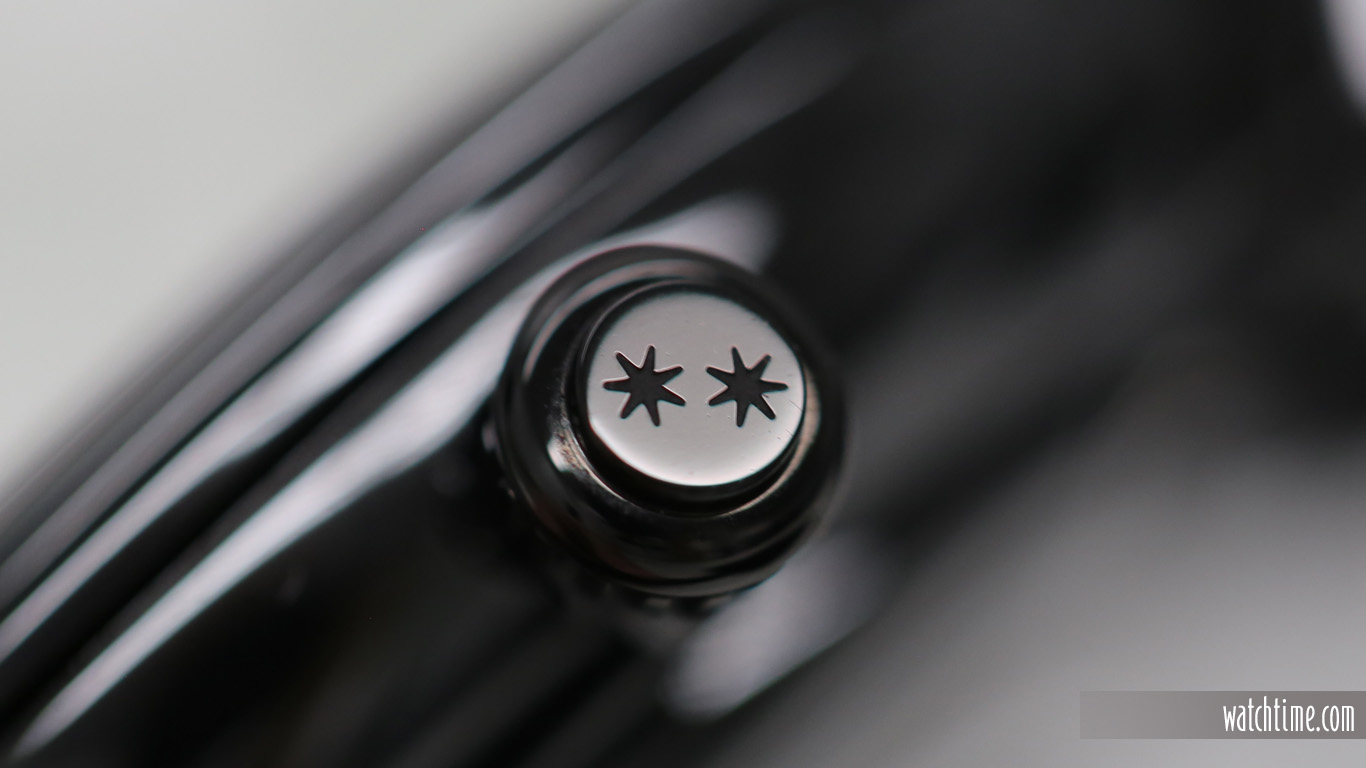
Under the crystal, the broad dial deserves close scrutiny. The figure eight of the two overlapping subdials is superimposed over the elegant clous de Paris pattern for which the watch is partially named. Also referred to as “hobnail” or “Paris hobnail,” the motif is a special kind of guilloché embossing using hollowed lines that intersect to form tiny pyramidal shapes. The result is a distinct yet subtle sense of depth.
The top subdial, for the hours and minutes, features white Roman numerals swept over by two 18k gold sword-shaped hands of different sizes. Appropriately, the tip of the hour hand just barely brushes the bottoms of the hour numerals, while the tip of the minutes hand stretches just to the periphery of the outer minutes scale, which is populated by tiny dot markers.
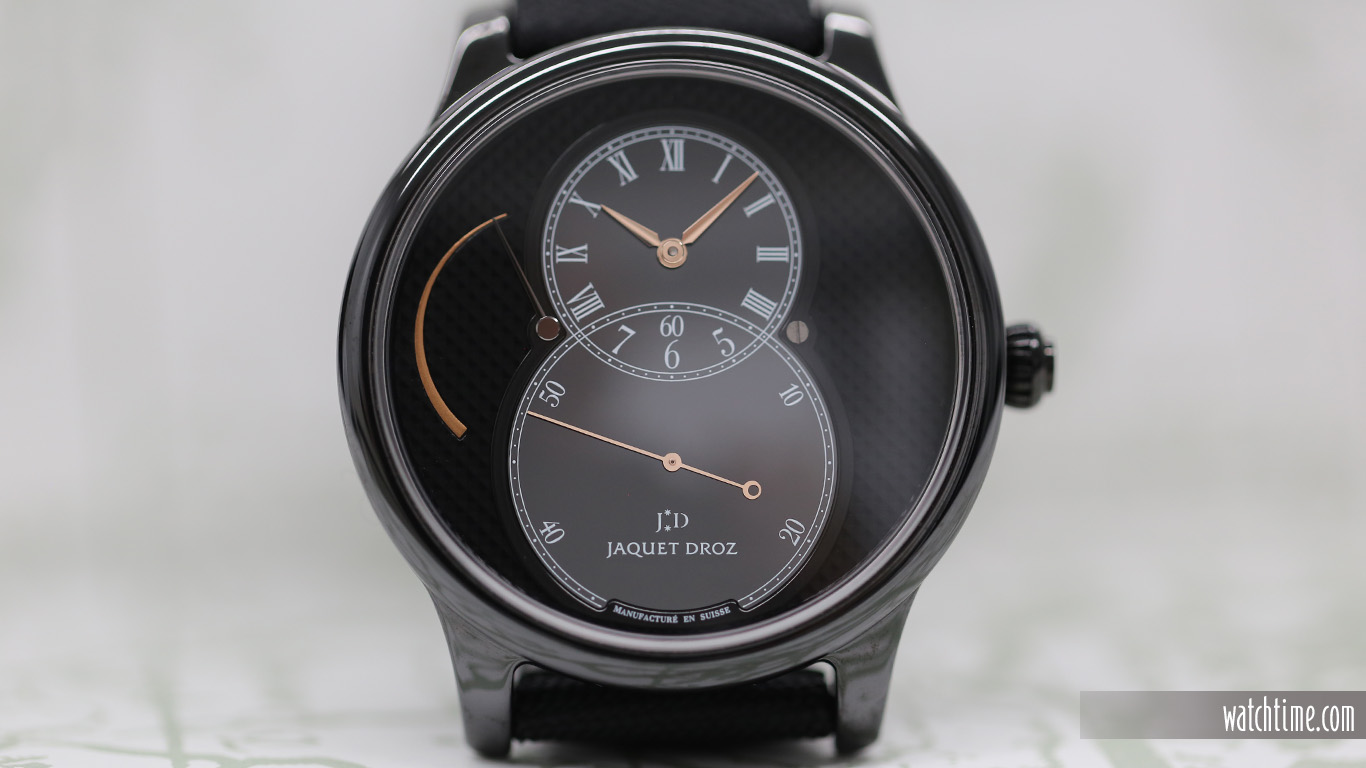
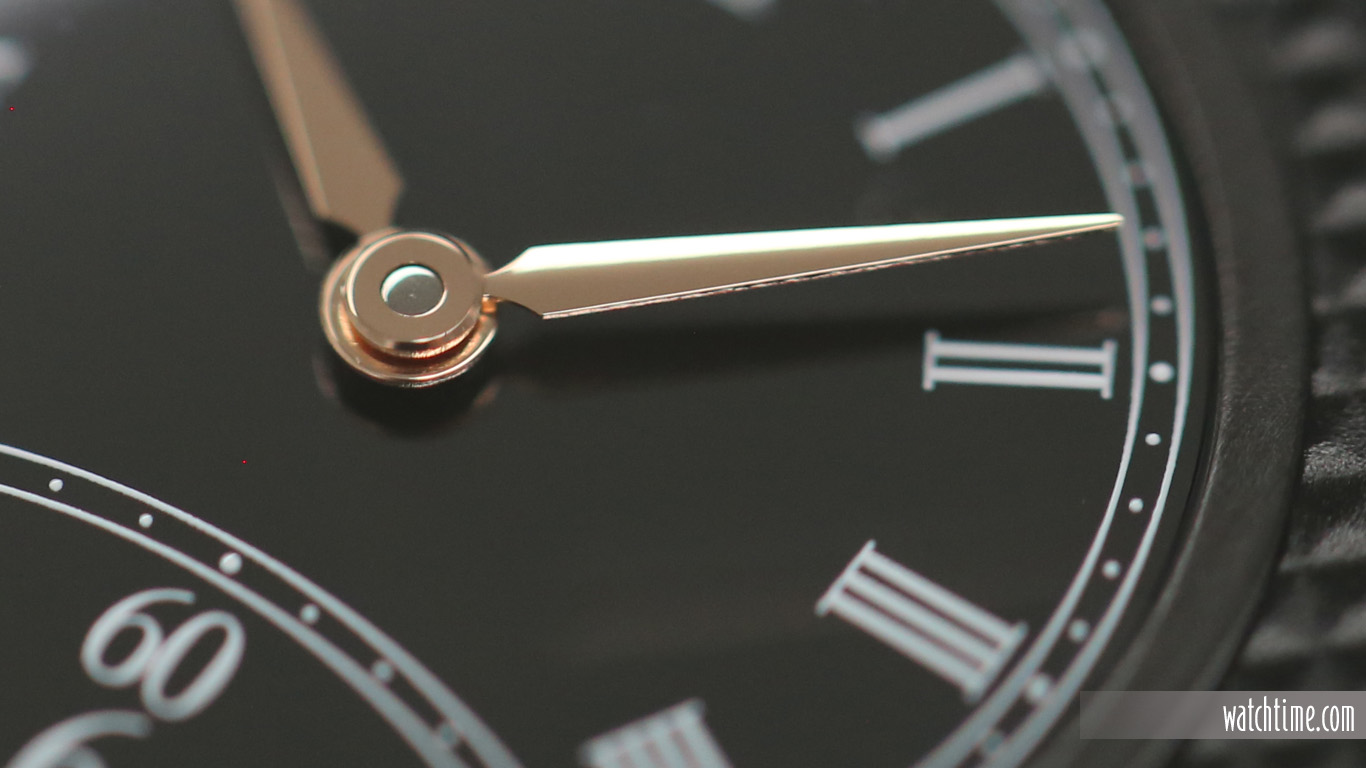
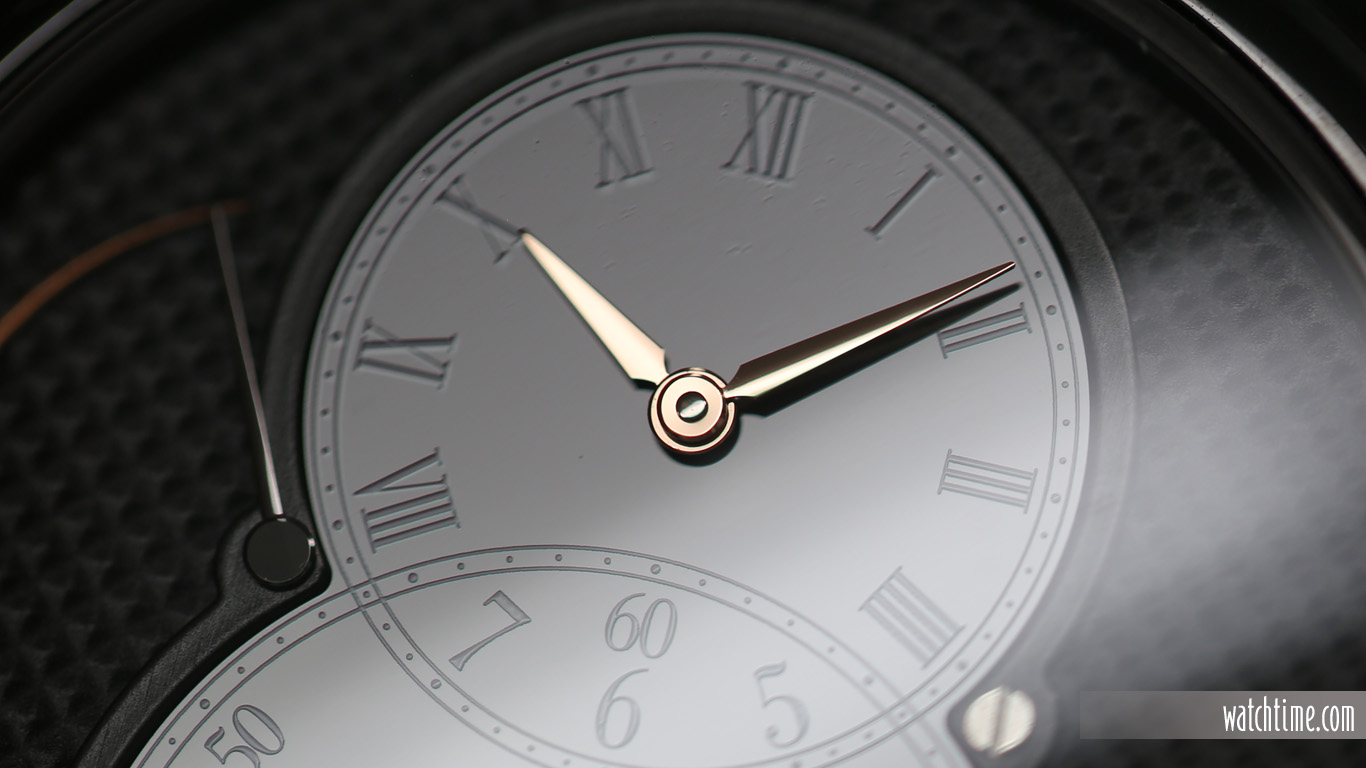
The lower subdial, which features a longer, thinner gold hand, is for the running seconds. In classical Jaquet Droz style, this larger subdial is distinguished stylistically from the top one by its use of Arabic rather than Roman numerals. It’s also obviously meant to be the dominant subdial; note how the 5, 6, and 7 of the hours-and-minutes subdial above it are in Arabic rather than Roman in the sector where the two overlap. One almost gets the whimsical idea that if you could magically separate the two disks, that those numbers would change back to Roman once pulled free of the dominance of the lower dial. (One quibble here, aesthetically, though: adding the “60” of the seconds subdial to the aforementioned three hour numerals makes the sector a bit too crowded, in my opinion. The design would work just as well without it, and no one would be confused as to where the 60-second mark was. This caveat, however, takes away very little from a near-perfect layout.)
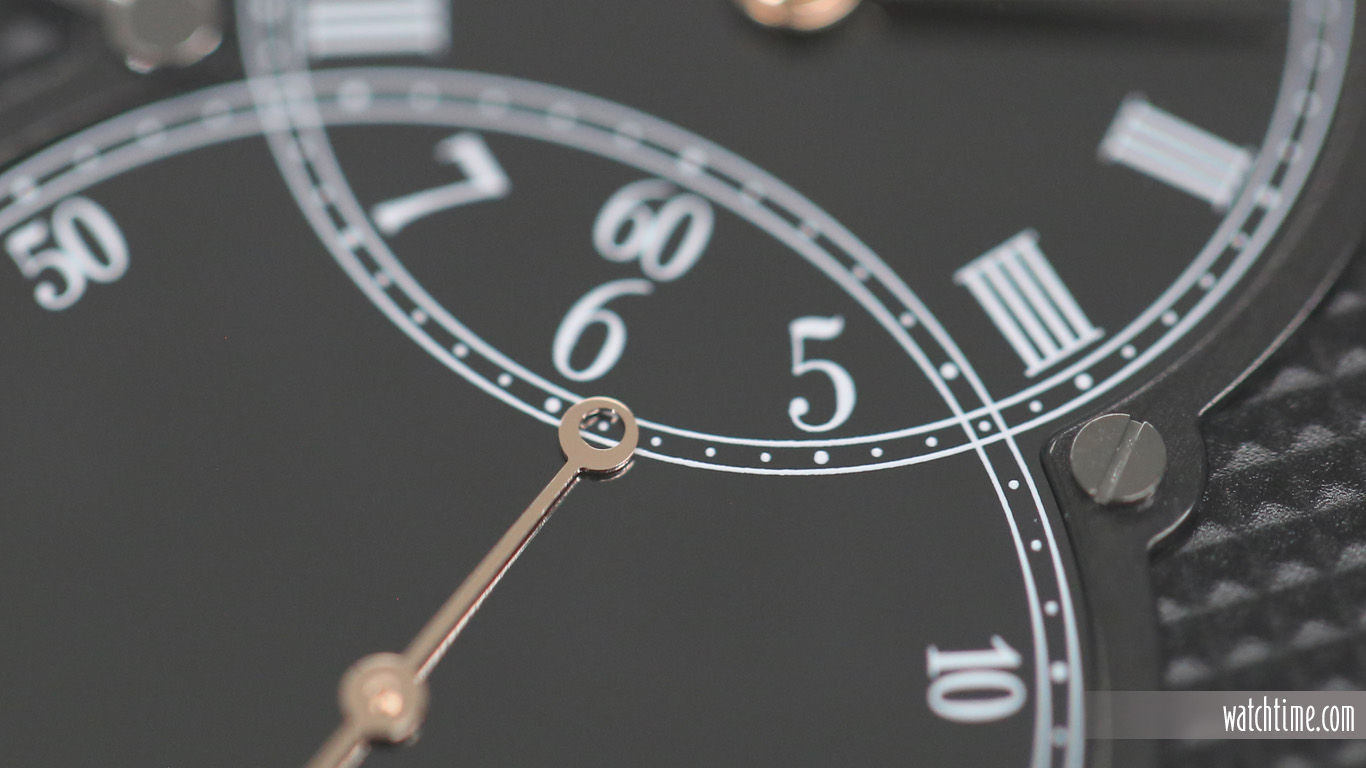
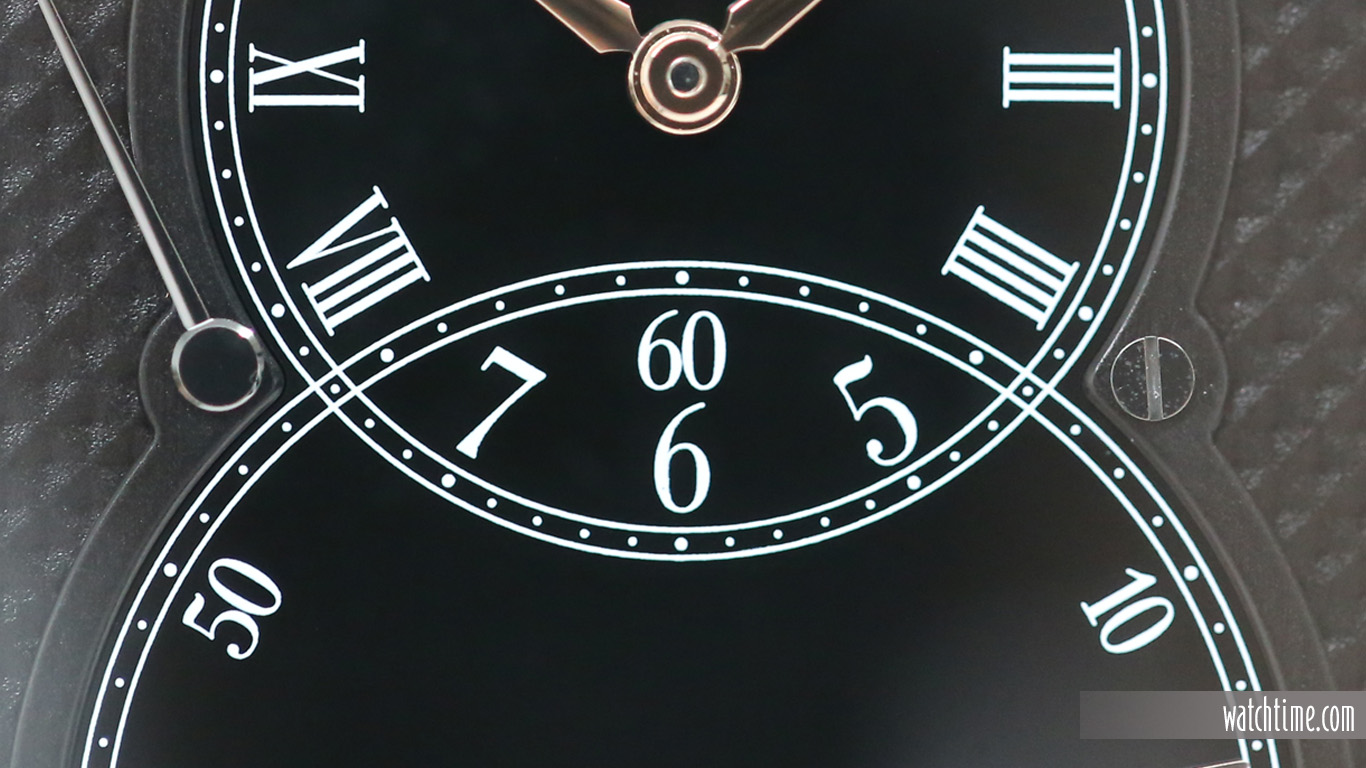
Of course, the element of that layout that defines this watch’s identity is the power-reserve indicator. It is the one piece that throws off the dial’s otherwise flawless symmetry, and does so with purpose. A small, pointed, black-gold-treated hand anchored just to the left of where the two subdials intersect runs along an arc-shaped golden curve (matching the hands) that is thin at its upmost point (signifying that the watch’s power is depleted) and wider at the bottom (signifying that the mainspring is fully wound). Of course, since this watch has a self-winding movement, it’s likely that this needle won’t move that much from the “full” end if you wear it constantly on your wrist, thus perpetually replenishing its power reserve of 68 hours, or nearly three days. If you’ve let the watch run down, however, such an indicator is quite useful, as it allows you to visually determine exactly how many turns of the crown will wind the movement fully.
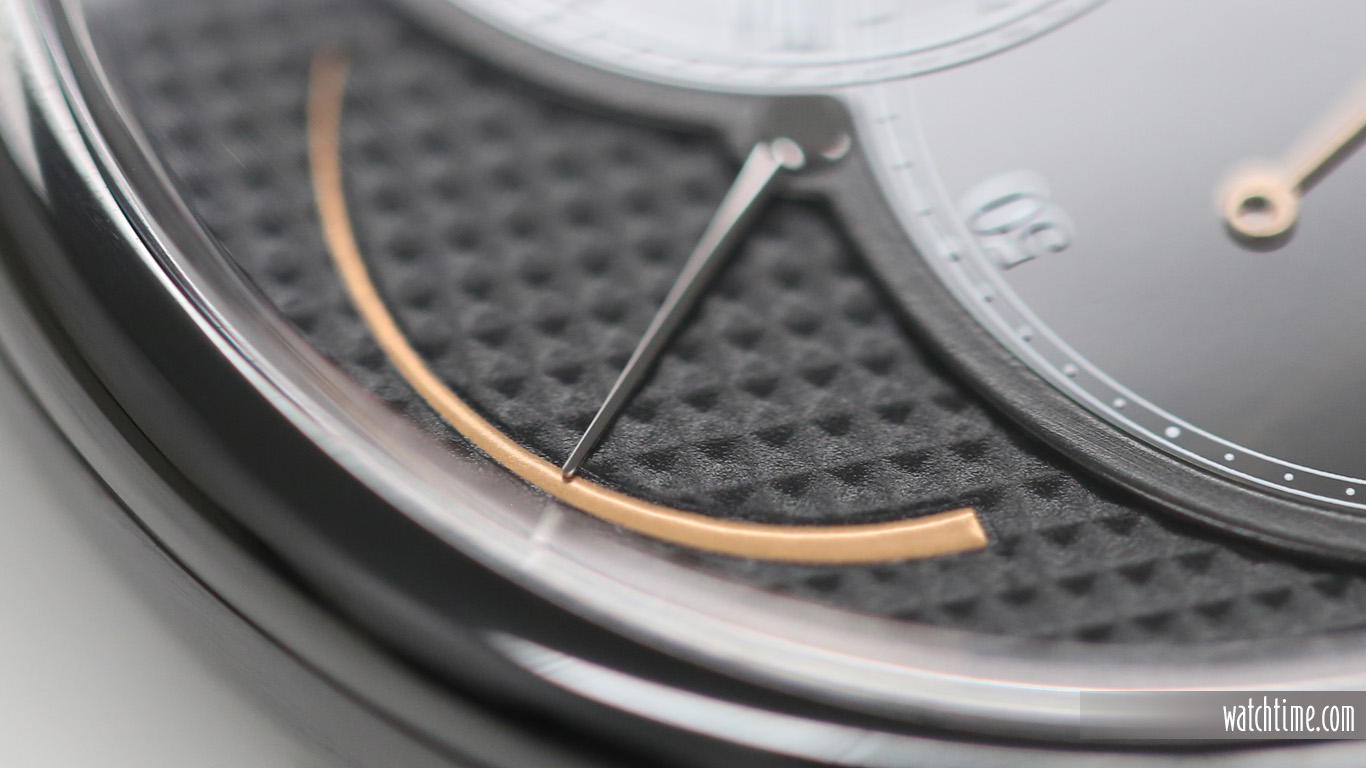
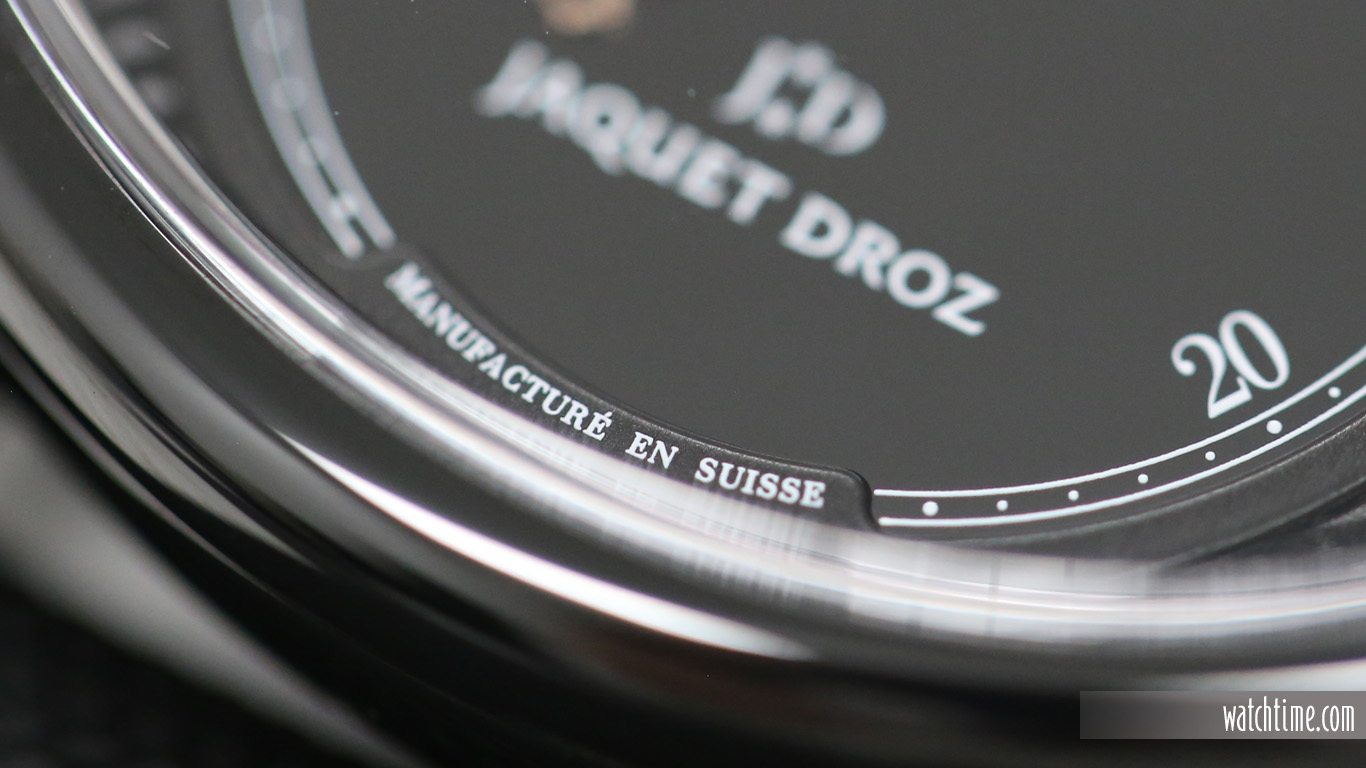
The movement itself, Jaquet Droz’s self-winding Caliber 4063D-S, is on display through a sapphire window in the caseback, which is secured by four black-coated screws in recessed corners. The heavy metal rotor, with its radiating lines and relief Jaquet Droz two-stars emblem, is treated in black PVD so it harmonizes visually with the case. Côtes de Genève adorn the ruthenium-coated plates and bridges beneath the rotor; the balance, oscillating at 28,800 vph, is in plain view, while the twin mainspring barrels, which store the 68 hours of running autonomy, are more discreetly placed. Appropriately, Caliber 4063DS-S is made in-house at the brand’s manufacture in the Swiss watchmaking hub of La Chaux-de-Fonds — which, incidentally, still has a street named after one of its most famous historical residents, rue Jaquet-Droz.


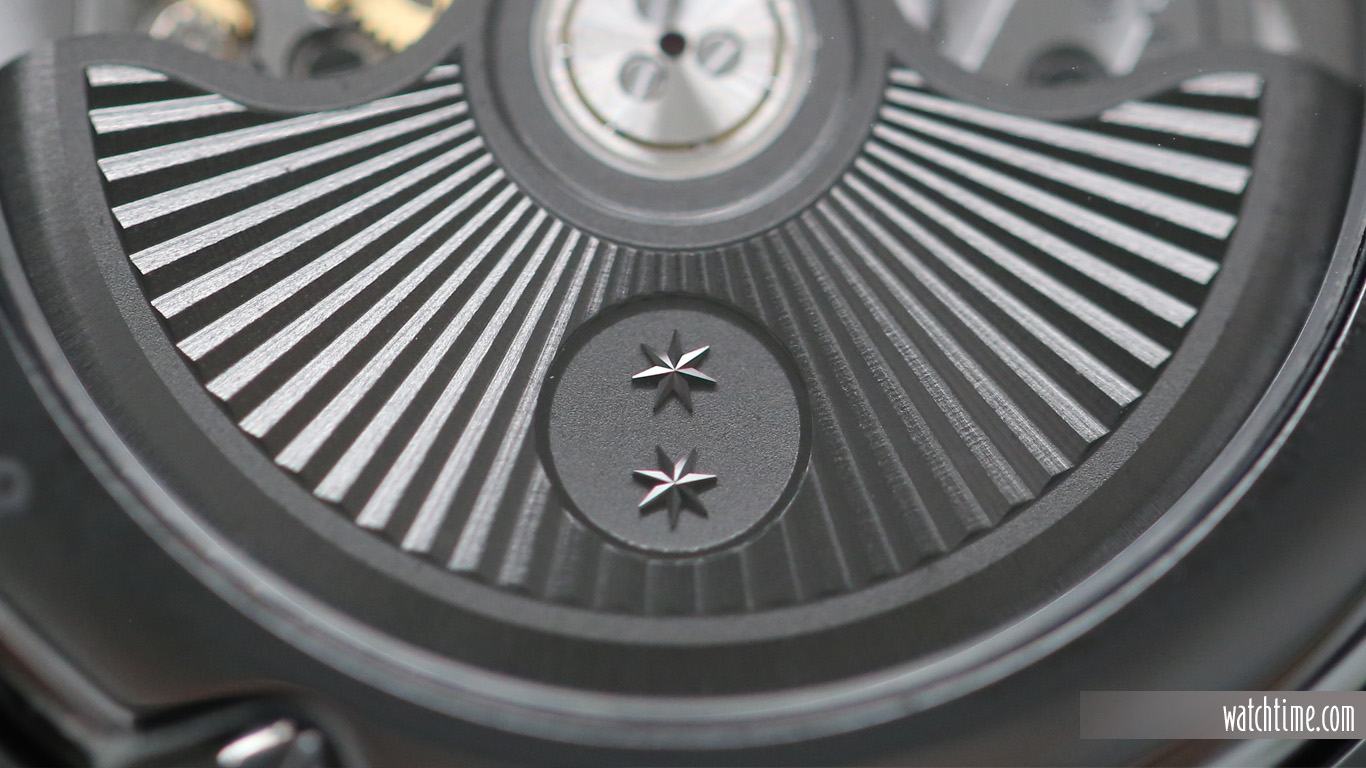
The strap of this exceedingly elegant timepiece is actually somewhat sportier than one might expect — made of a black fabric, attached to the lugs by screws and fastening with a double-folding clasp made of ceramic and stainless steel with sleek, black PVD finish. Why does it work? Because the textured pattern on the strap seems to almost effortlessly act as an extension of the dial’s clous de Paris pattern. Other touches include the two stars on the little bridge where both ends of the buckle attach, the strip of black leather for the buckle’s perforated holes, helping to secure the timepiece comfortably to the wrist, and the engraved Jaquet Droz logo on the buckle itself.
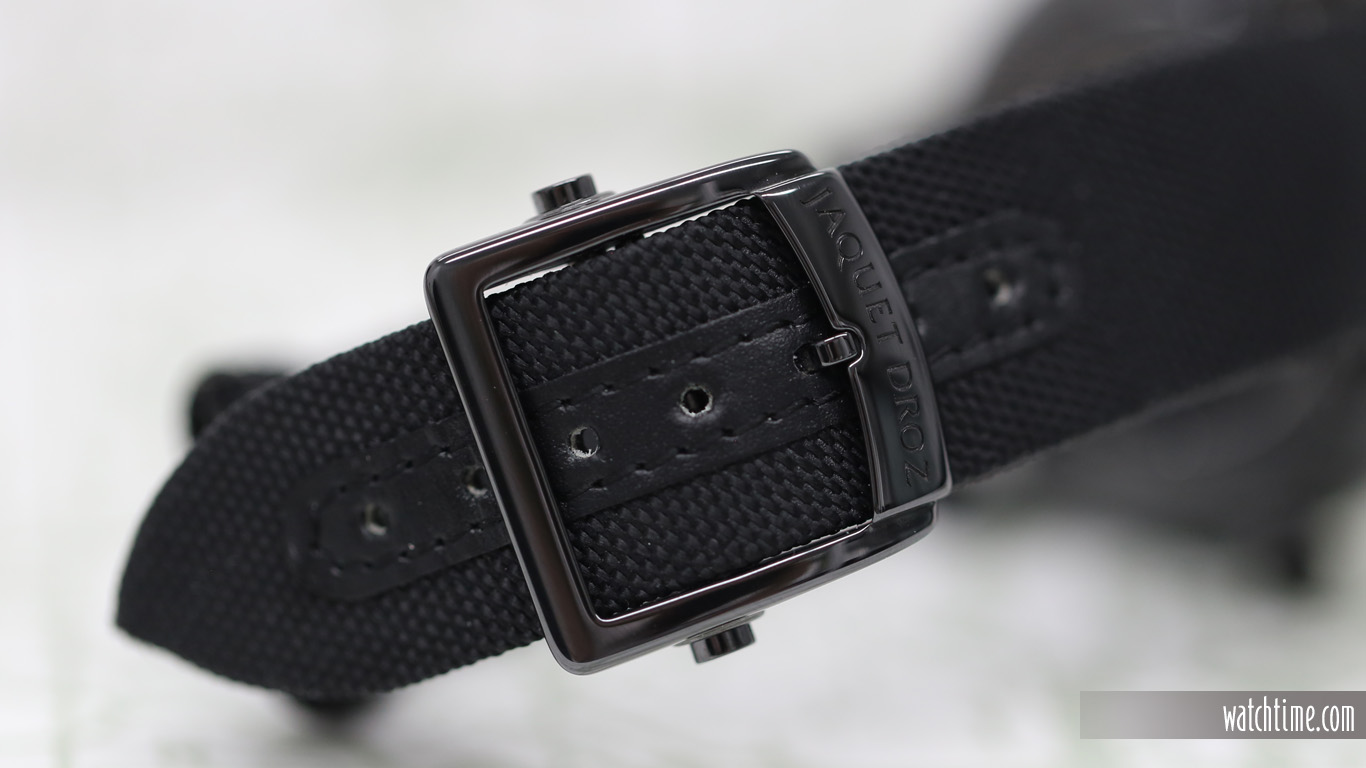
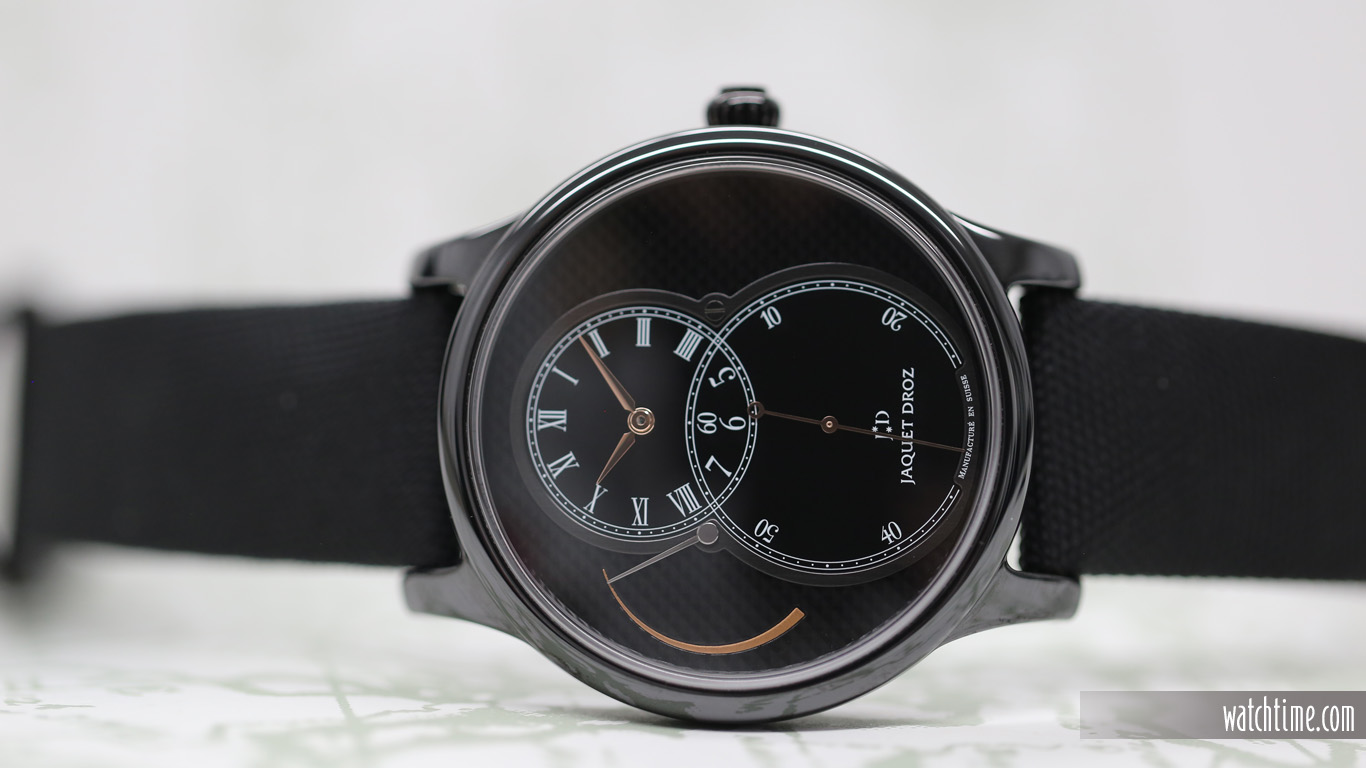
As with many of Jaquet Droz’s limited-edition watches, this one not only builds its distinctive look around the figure eight but also uses the number eight — not coincidentally, a lucky number in Asia, where this brand has long had fans — to determine its production run. The Grande Seconde Power Reserve Black Ceramic Clous de Paris is a limited edition of 28 pieces (each with an engraved edition number “xx/28” on its caseback) and retailing for $16,800.

